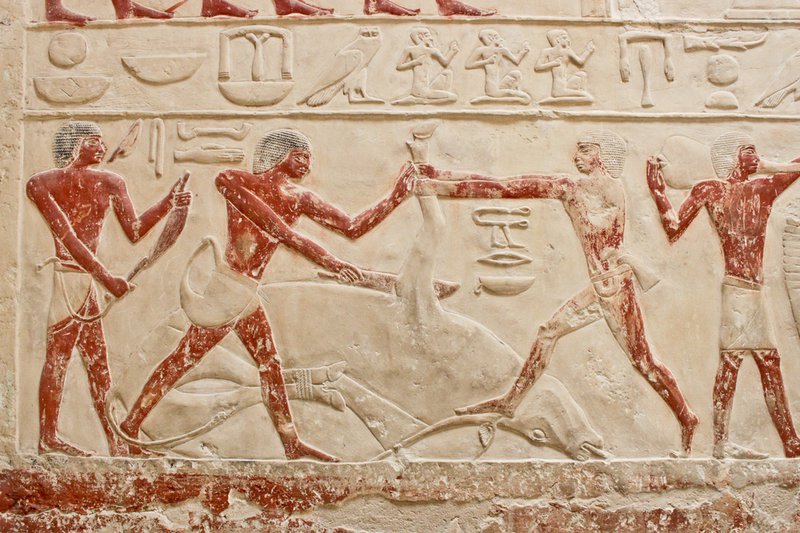The Monuments Men of Mentions and Moments
Weekly Article

Jan. 28, 2016
For decades, antiquities crimes have had a devastating effect on cultural heritage and international security. The Nazis waged campaigns of theft and destruction throughout WWII, stealing art and antiquities; much remains lost, and pieces are still being returned today. Cambodia continues to seek the return of its priceless treasures stolen by the Khmer Rouge during the country’s genocide. These eras of historic heritage devastation are being repeated again, this time in the Middle East.
Cultural crimes have recently begun making headlines internationally because of their importance in the propaganda and funding of terror groups like ISIS. The group has shocked the global community by systematically destroying UNESCO World Heritage sites in Iraq and later again in Syria. Just this month, satellite images suggested that ISIS destroyed a 1,400-year-old Christian monastery in Iraq. The use of antiquities as a source of funding for their campaign of terror was confirmed in May 2015 when U.S. Special Forces raided the compound of Abu Sayyaf.
But ISIS is not the only threat to heritage in the Middle East and North Africa. Organized criminals across the region are wreaking havoc on archaeological sites and profiting from the plunder of history. The illicit trafficking of cultural heritage is believed to be a multibillion-dollar global trade; INTERPOL places it among the ranks of the illicit trade in drugs and weapons. But there is an information gap, and little data is available on the global magnitude of these crimes.
In an effort to find solutions to this growing challenge that can be adapted on-the-ground in nations facing crisis, the Antiquities Coalition—a nonprofit organization where I serve as chief of staff—conducted a study on the patterns of cultural heritage crimes in Egypt. Egypt has seen a massive increase in threats to antiquities following the instability of the January 2011 revolution. Egyptians are also active on social media—providing a wealth of free and publically available information. All of the data examined was sourced from media or social media, government and civilian sources alike.
Reports from a variety of international media and social media archaeoactivists—as I like to call them—from January 2011 through December 2015 revealed patterns in illicit heritage crimes (including looting of museums, illegal digging at sites, trafficking at ports, and more) that could aid authorities in protecting antiquities. Major crises or conflicts almost always precipitated the looting, destruction, or attempted attacks of museums. Attacks on antiquities storage facilities followed upheaval immediately—sometimes, within hours—and once those resources were tapped or reasonably secured, archaeological sites became the focus of activity.
Today, Egypt is suffering financially from the significant drop in tourism, diminishing the revenue critical to government bodies charged with protecting these sites, including the Ministry of Antiquities and the tourist police force. Financial strain has left little funding available for resources to protect sites at a time when additional security is needed. Even with these challenges, Egypt’s authorities have made significant efforts in recent years to respond to these crimes. Security has been thinly dispersed across Egypt’s hundreds of cultural heritage sites to protect them with what resources remain available, but it seems that this approach has not been very helpful.
That’s where the recurring cycle of threats to heritage comes into play. Egypt and other countries at risk of crisis can use this pattern to anticipate the types of activities that may precipitate looting and other crimes, allowing them to calculate their responses for efficient allocation of their sparse financial and personnel resources.
This evolution in activity and the cycle it follows is not unique to Egypt. Attacks on museums and heritage institutions during the start of major crises and conflicts are seen elsewhere following all manner of crisis—economic downturn, natural disaster, and political upheaval. Anything that contributes to a breakdown in governance and civil order can serve as a catalyst for this cycle. In the midst of Greece’s 500,000-strong austerity protests in 2012, armed robbers attacked and looted the Museum at Olympia. In Mali in January 2013, the terror group Ansar Dine took over Timbuktu and quickly targeted the country’s historic and valuable Islamic manuscript collection. During the 2014 Ukrainian Revolution, the storage collections of the Museum of the History of Kiev were ransacked and looted. Haiti’s political uprisings in 2004 precipitated the looting of the downtown museum by rebels.
Although the evolution of this process is cyclical, it is also adaptable. One of the most difficult elements of threats to heritage we are facing right now is the rapid pace at which criminal networks operate, often outpacing the efforts of authorities. The boom of technology and expansion of Internet access on a global scale has provided a new means of keeping up with these crises and the crimes that follow.
Jan. 25 marked not only the five-year anniversary of the Egyptian uprising but also the anniversary of the looting of the Egyptian Museum in Cairo. The threats to Egypt’s heritage today are even greater than they were five years ago. As the reach of terror groups like ISIS continues to spread beyond Iraq and Syria and into North Africa and Europe, their attacks have targeted heritage and tourism in Egypt, Tunisia, and across the globe. Their focus on these targets reminds us of how critical heritage is to economy, stability, and the fabric of society. We must continue to look toward innovative solutions and if needed, use unconventional resources, to find new ways to combat threats to the cultural heritage that defines our common history.
This article originally appeared on Future Tense, a partnership of Slate, New America, and Arizona State University.